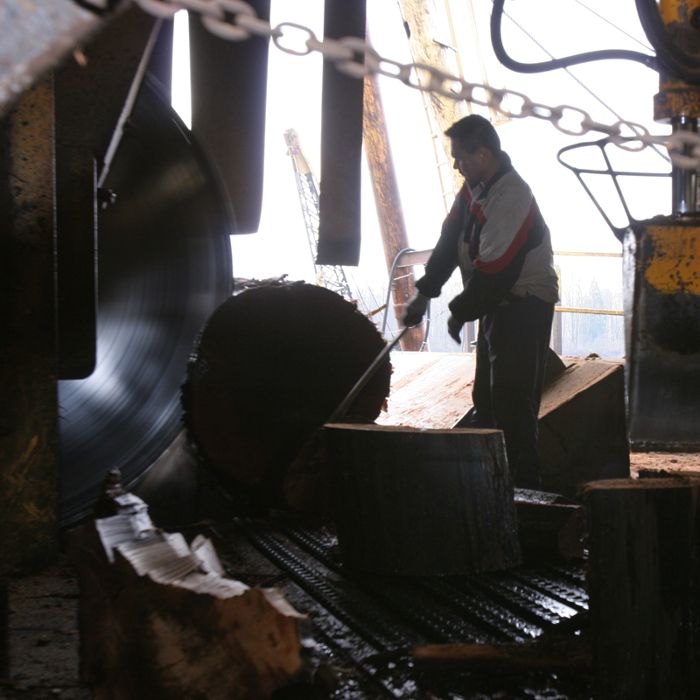
That can’t be safe!
I’ve had my fair share of industrial labor jobs. Now I look back and count myself lucky that each one of those jobs was relatively safe. Until recently, I took for granted how seriously safety issues are regarded in America’s work places.
Even though my grandfather died on an industrial construction site, I didn’t realize how far we’ve come with job-site safety until, as research for an article, I visited a shingle mill.
I was astonished at how dangerous it looked. This is not a slam against the owners of the mill. They were very kind for inviting me in. Their product was top notch and they assured me that they had routine safety inspections and their record was very good.
However, I couldn’t stop thinking that it looked incredibly dangerous.
I saw the below video on Youtube — uh, during my lunch break — and was struck by how casual the guy operating the saw looks. It gives me the shivers. Shouldn’t there be some guard around that blade?
I now officially take back any swearing, cussing, cursing, obscene diatribes, or other uncomplimentary utterances I have made concerning the stupidity and inconvenience of seemingly excessive safety regulations.
Want to see a more REALLY BIG saw blades? Click here for a slide show of my saw mills tour.
Fine Homebuilding Recommended Products
Fine Homebuilding receives a commission for items purchased through links on this site, including Amazon Associates and other affiliate advertising programs.

8067 All-Weather Flashing Tape

Reliable Crimp Connectors

Affordable IR Camera
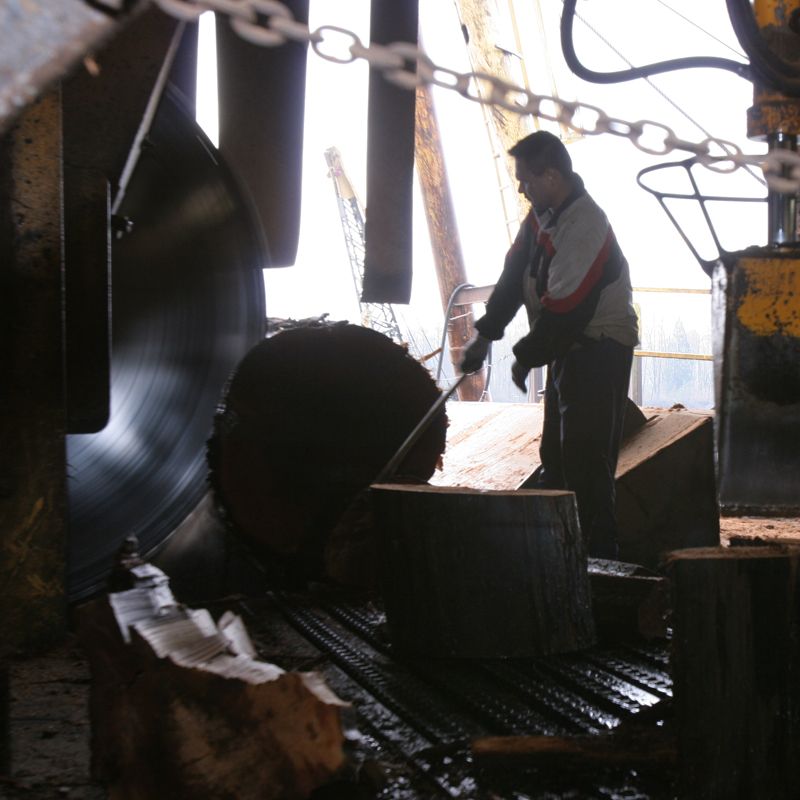
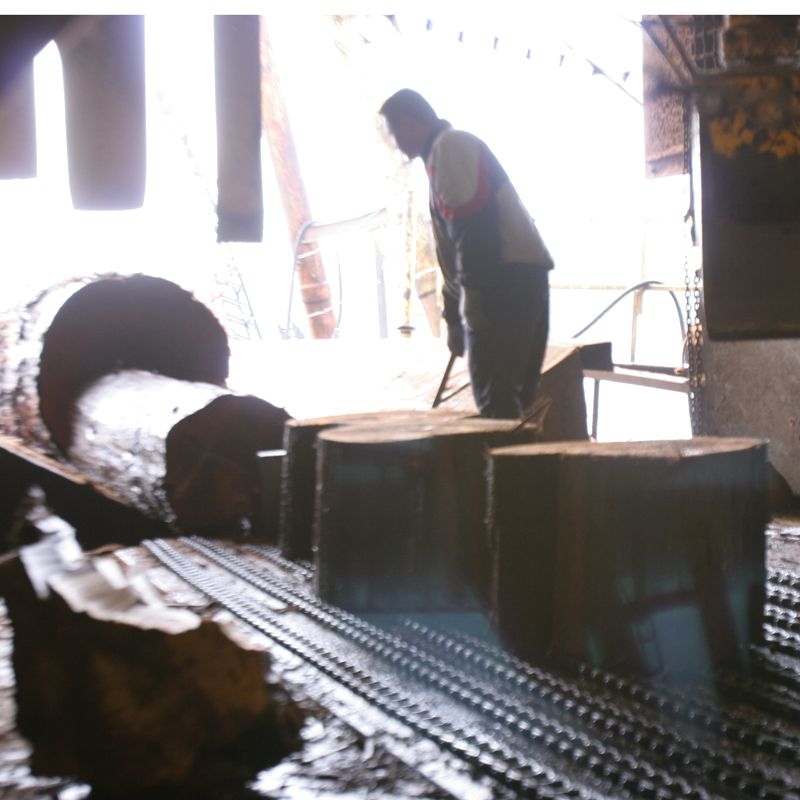


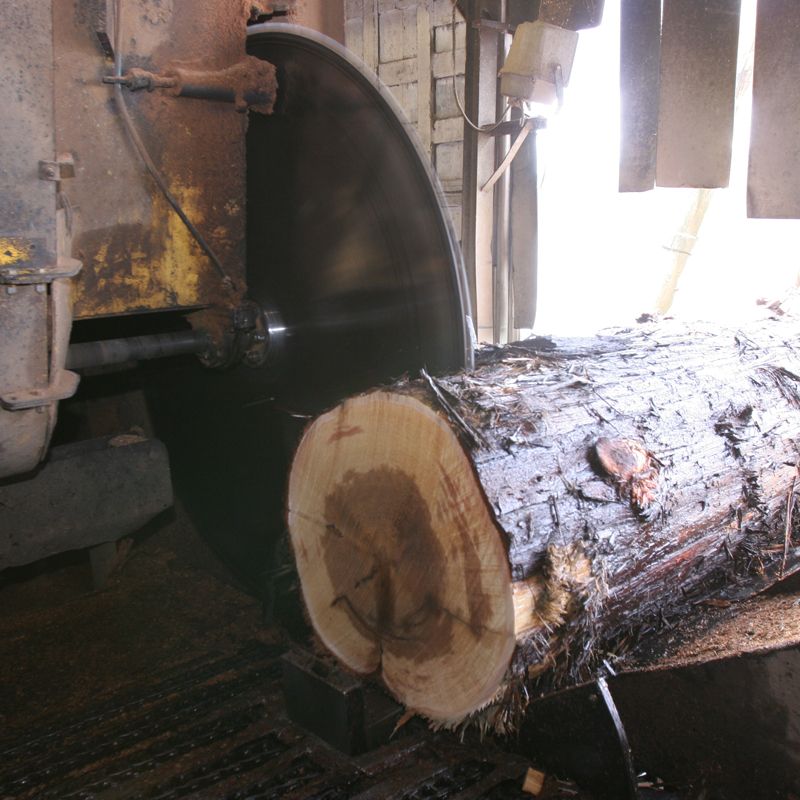
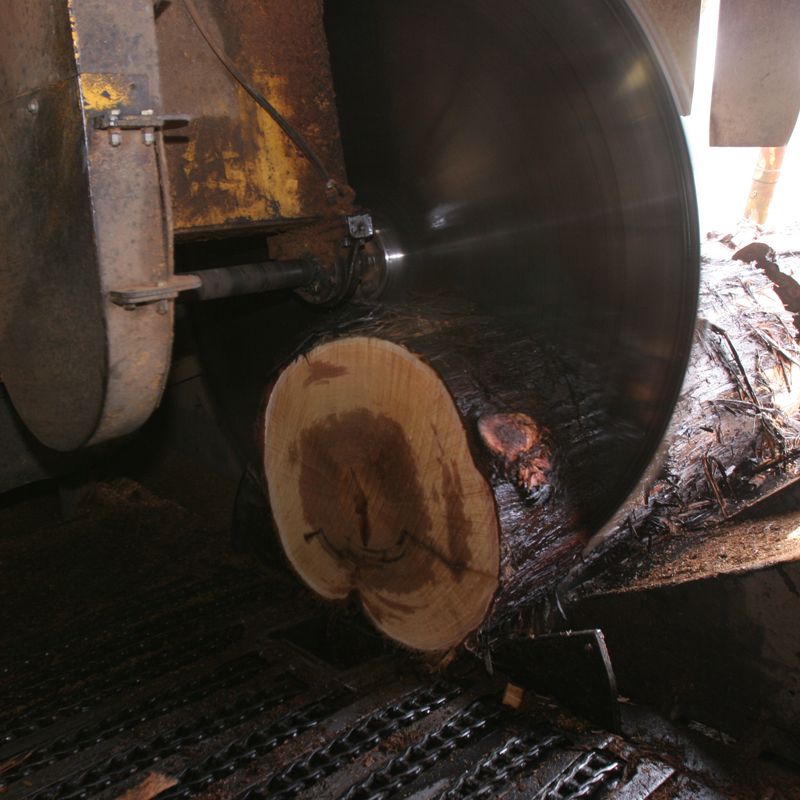























View Comments
Bet that place is a bit loud. Hearing protection? Creeped me out a bit as well-hope there's a hospital near by. I've seen other shingle movies, but they were in Canada.
I live in Oregon and although most of the old timers have passed on to the great shingle mill in the sky many had no fingers!!!
Very scary. They need to update a safety devise that will allow production as well as protecting the worker.
Guys, I remember seeing a video like this long years ago, wait I think it was on this old house. Bob Vila travels to the shingle factory to see where the wood shakes come from.
Ugh! If this was a forwarded attachment from an e-mail, I would expect to see the guy's hand flying off at the end of the video. Definitely third-world country dangerous! This mill is in America? Where the heck is OSHA if it is???
The show "Dirty Jobs" had an episode where the host visited a shingle and shake mill. They had the scariest woodcutting tools I have ever seen, bar none. I believe the worst (to me) was the bandsaw where the sawyer cut a board into two shakes, cutting the board on edge, corner to corner. One slip and no hand!
Scritch beat me to it, but Dirty Jobs shows that machine. It is quite nerving. Add Mike Lowe and it's funny and nerving.
I have standing invites from the owners of two shingle mills; one in BC and Quebec. The companies are top of their league and employ the most efficient and safe methods according to the staff. I've only heard stories of the saws and their description matches what's on the video. The only difference is that the guy seems to be moving pretty slow. It's piece work- paid by volume and he's moving pretty slow.
I suppose if you showed the sawyers videos of us using nail guns and sidewinder circ saws they'd think we were crazy too.
I'm not saying that this is something that I'd want to do, but notice that his hand never goes anywhere near the teeth of the blade.
IF, and I can't really tell, the middle of the saw blade is totally solid, then he is "relatively" safe.
Now is there room for improvement here? You bet!
I thought I saw him make a small miss-step while picking up a new log. Imagine what would happen if he fell into the blade!
Hang on....
Yes, at first glance, even second, appalled glance it looks very dangerous and unguarded.
But, how does the common chain saw look to the person who's never used one? Hellaciously dangerous -- and it is if you don't know what you're doing.
I'm just saying there mat be more safety here than meets the untutored eye.
As a retired OSHA guy I can tell you that shingle mills are some of the most dangerous places there are to work. The operators work in very close proximity to the saw blades and most of them do piece meal work (they get paid by the shingle not by the hour) so the inceentive to work fast as opposed to safely is ever present. Amputations of fingers, hand and arms are common injuries in this industry. Many of the mills are so small they are under OSHA'S radar and if they are one man mills they are exemt from any inspections. There must be a an employer/employee relationship for OSHA to have any jurisdiction. In addition to the amputation exposure the workers breath in copious amounts of sawdust. If the saw blade doesn't get you in the near term the lungs eventually will do you in in the long term. We still have a long way to go in industrial safety and health.
I live in a rural area where we have lots of 19th century technology still in operation--saw mills, paper mills, etc.--and I remember a small shingle mill. It was essentially an one or two person operation, but it seemed that the shingles fell farther from the blade. What didn't get shown was the edging that the operator did before tossing the shingles down the sorting chutes. That's usually a wheel with a single blade in it,much like a slicer blade in a food processor...and probably almost as dangerous as the open saw blade.
I think safety is much more relative to the mindset of the operator. I worked in the woods thinning in Washington when I was young and discovered chainsaw chaps. When I cut the small trees, I had to make sure they fell away from the cutting line, so I would pass the saw to my right hand, set it on my left thigh and use my left hand to sweep the brush to my left. After a while, my chaps were shredded on my left thigh because I became careless.
Please don't think I'm advocating for less safety measures--I have a SawStop--but nothing beats a focus on safety.
Regrettably someone will eventually injure themselves or die from injury at one of these machines. A court award of compensation for such injury or death will likely be more than enough to pay for some ingenious guards which would prevent injury without diminishing productivity.
That ingenuity should happen now, before somebody is hurt or killed. Marvelling about how long such practices went without injury will not suffice in court.
Where's OSHA on this?
For several years I used to attend an old engine [one lunger] meet in New England.Several of the exhibitors also had old equipment in operation. One such, was an old shingle mill with even less safety devices, read none, than the one in the video.
Even more appalling was was a disorderly pile of cut shingles about 4 feet from the blade upon which were two five or six year olds rough housing. Even now. several years later I still shudder when I recall it.
I'm from Pacific Beach, Washington and worked around several shingle mills. Many of the old timers had missing fingers and otherwise experienced injuries from equipment.
Many of the dangers were not evident from this video. Mills also have flat saws that are like the saw shown, but with the blade situated horizontally, huge band saws, open conveyors, hydraulic splitters, and so forth, any of which are capable of carnage.
To say this industry is regulated is a vast understatement. Bureaucratic regulations apply from the tree to the shingle/shake broker and retail outlet. Many are valid, but as many are well removed from reality.
Mills, in addition to payroll, must maintain the mill and equipment. They must search out and buy cedar claims (these are much like gold claims) to log or even mine logs that have been buried for decades. They must maintain or hire trucks and helicopters to get the blocks of cedar from the forest to the mill. They have to transport their product to market. Finally, they have to deal with the regulations noted above and a constantly changing market.
In the end, profit margins are small and the mills survive only by putting out large quantities of product. The overhead leaves little for safety or other improvements, including heat, protection from the rain and so forth.
Add to the chaos, alcohol and drugs are a way of life for many of the workers. They put in hard hours in an outdoor environment, which requires they work in freezing rain, snow and so forth.
Regarding comments about OSHA, many of these mills are not merely under its radar, they are not subject to its [federal] jurisdiction. Some have even had to run overzealous public servants off their mill sites. On that I do not fault them, some things are better taken care of at home (ours is not one of a central government, each state is and should remain sovereign (remember, it was Bill Clinton who wanted to fire all the cattle guards out west)).
The shingle/shake mill shown in the video was pretty fancy, compared to the majority of mills. Most look like long abandoned commercial enterprises. Rusted correlated metal walls and roofs are the norm. Wiring (single and three phase) is hobbled together. Heavy equipment, often from at or near the turn of the century, is patched and kept running on little more than ingenuity and drive.
Just while I lived there, one mill owner suffered three fires at three different mills. The loss of raw wood from one mill alone was in the tens of thousands of dollars. This is a common concern among mill owners.